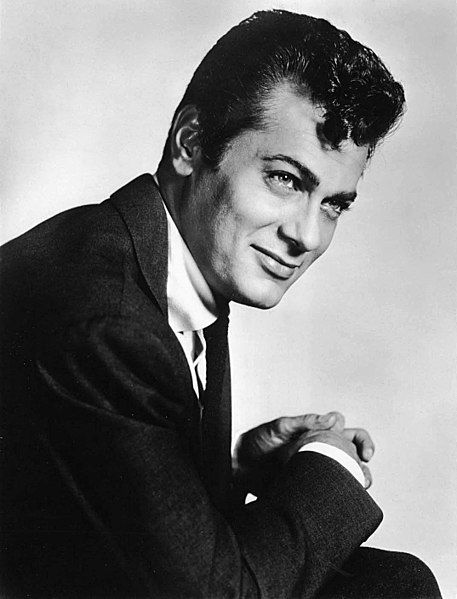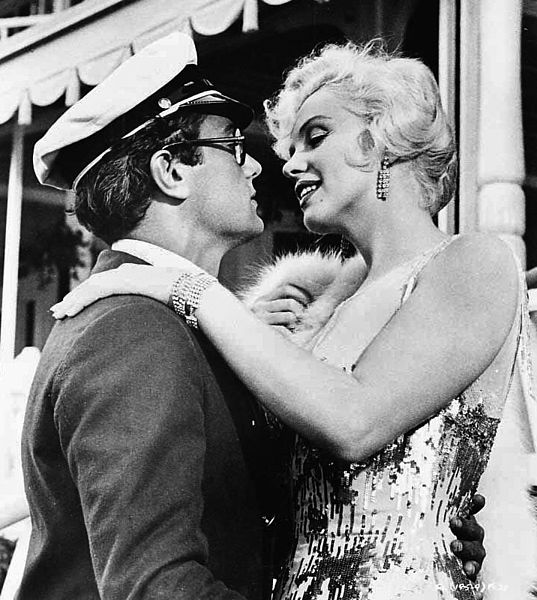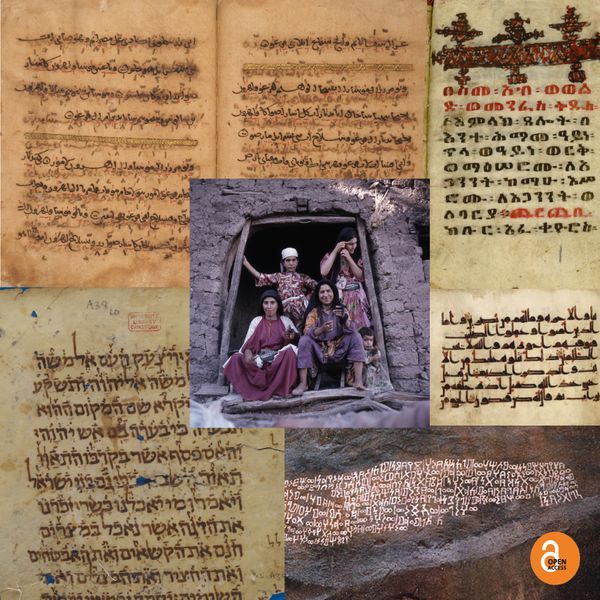Tony Curtis, “The Young Juggler”
By Jan M. Ziolkowski

What a difference the passage of six decades can make! On March 29, 1960 “The Young Juggler” was broadcast, in the heyday of national television, for the first and only occasion in the United States. The only later screening of the 49-minute installment took place in the museum of Dumbarton Oaks on January 23, 2019, in tandem with the exhibition “Juggling the Middle Ages”.
The lead, the movie idol Tony Curtis, was born on June 3, 1925 and died on September 29, 2010. If alive today in 2020, Curtis would be nearing 95. The story of his involvement with the jongleur de Notre Dame—of a very secular Jew caught up in a legend of Christian devotion to the Virgin Mary, of a film star who at that point had his pick of roles in the biggest motion pictures but who chose to self-fund the reenactment of a tale that is now nearly forgotten—merits attention before the facts have vanished into the mists of oblivion. In his last memoir, the production had disappeared from his filmography.[1]
New-York-born, the future actor spoke Hungarian for his first six years. In all his movies, his pronunciation immediately betrays, often with unintentional and anachronistic humor, the indelible accent that he picked up from living on the East Side of the City. This trait led to his being teasingly nicknamed “Boinie” for his pronunciation of his own first name: before taking on his consummately WASP nom de théâtre, he went by the un-Hollywood-ish birth name of Bernard Schwartz.
In popular culture Curtis’s fame may be waning, but he remains known for the standouts in his oeuvre, for being the father of the actress Jamie Lee Curtis, and for the tabloid-worthiness of his private life, starting with the fact that he was married six times and finishing with a very public dispute about alleged golddigging in the handling of his estate between his final wife and surviving children.
But let’s put aside this century’s gossip and travel back sixty years or so to the 1950s, Tony Curtis’s heyday as a heart throb. With his thick black hair and oft-bared chest, he made his reputation in costume dramas of Hollywood’s so-called Israeli period, especially the sword-and-sandal blockbuster from 1960, “Spartacus.” A personal favorite of mine among such historical fictions, requiring slightly warmer footgear, was the swashbuckler of historical fiction, “The Vikings.” In this cinematic sizzler from 1958, the leading roles belonged (as those in “Spartacus” would again two years later) to Kirk Douglas and Tony Curtis. In response, the stand-up comedian Lenny Bruce (1925–1966) commented “Even the Vikings are Jewish.”[2] Beyond these peplum movies, Curtis’s most memorable role was his comedic turn as co-star with the consummate “blonde bombshell” Marilyn Monroe in “Some Like It Hot,” from 1959.

How does Tony Curtis tie in with the jongleur de Notre Dame? On that fateful date in 1960, NBC-TV ran, in a program called Startime, his production. The telefilm was originally to be billed simply as “The Juggler,” but the title picked up the adjective “Young” to avoid confusion and copyright quibbles with a feature-length picture from 1953 with Kirk Douglas.[3] When the network segment screened, Tony Curtis was thirty-four years old. As the chronology of all the preceding films suggests, his career stood at its height. Though his marquee value declined steeply from then on, he starred later in the decade as serial killer Albert DeSalvo in the 1968 thriller of “The Boston Strangler.”
“The Young Juggler” is based loosely on the short story by Anatole France.[4] This version steers the tale in a weird direction. The performer is set upon by a mob of husbands because of his womanizing with their wives. The cuckolds, although they do not employ the word explicitly, want to castrate him. Before being cut short in this way, the entertainer escapes, but only by betraying his best friend who dies after suffering near-crucifixion. In connection with the last motif, it is worth relating that the showtime episode was televised not in May, which in Catholicism is labeled the month of Mary, or December, when Christmas would make Marianism more plausible, but in Lent: in 1960, Easter Sunday, fell on April 17.
To wrap up this quick recapitulation of the plot, the wounded juggler seeks refuge from his enemies inside an unidentified European monastery. Nursed back to health, he realizes that he has lost use of one arm and can no longer practice his profession. In despair, he goes so far as to ask why God did not end his life instead of his juggling. Through therapy and faith, the injured man experiences an unexpected recovery. In return, he offers the Madonna—the statue of the Virgin Mary—the only gift he has: his juggling act. He is rewarded with a miracle.
Curtis claimed to be conflicted about the pluses and minuses of television. At one stage he professed to be happy to make money while gaining acting experience. But on other instances he criticized the crass commercialism of the medium. The weekly TV Guide headlined “The Short TV Career of Tony Curtis.”[5] In the article, he indicated that “the Young Juggler” would likely be his last appearance on the small screen. That prediction proved to be anything but true.[6]
In one of his autobiographies, Curtis ascribed credit for “The Young Juggler” to two factors, the influence of actor Cary Grant and his own interest in circus skills.[7] He described the film as dramatizing “the story of St. Barnaby, the patron saint of variety acts.”[8] No such holy man will be found in serious works on hagiography, but he has been included in popular works on saints. Why? Because Anatole France gave the name to the central figure of his short story about “Le jongleur de Notre Dame,” or “The Juggler of Our Lady.” On the same basis, Barnaby has been used as a stage name by professional jugglers.[9] From this the protagonist achieved, if only popularly, sanctification.
When invited to take a crack at producing a Startime feature, Curtleigh Productions came up with the idea of “The Young Juggler.”[10] Curtis was adamant that the episode was not a television program, but a film shown first on television. He judged it “a good picture.” In his much later autobiography, he indicated that he had intended to add footage and to release the telefilm as a conventional feature-length movie.[11]
His understanding of the story was idiosyncratic, to put it mildly. In an interview he characterized the show as being a period piece, set in 16th-century France, an adaptation of the legend of St. Barnaby. St. Barnaby was a bumbler who became crippled and got back his talents through a miracle while tumbling to entertain a statue of the Virgin.
He regarded “The Young Juggler” as “therapy,” one among other “miracles happening from within.” To him, the preeeminent theme was of “a man’s conquering his fears.” He summed up: “I’m a firm believer in the old saying, God helps those who help themselves.”
The Juggler of Notre Dame and the Medievalizing of Modernity. Volume 6: War and Peace, Sex and Violence (2018), written by Jan M. Ziolkowski, is freely available to read and download. The first five volumes are also freely available.
[1] Tony Curtis, with Peter Golenbock, American Prince: A Memoir (New York: Harmony Books, 2008), 340–341.
[2] Nathan Abrams, Stanley Kubrick: New York Jewish Intellectual (New Brunswick, NJ: Rutgers University Press, 2018).
[3] More recently had come the animated short “The Juggler of Our Lady” from 1958.
[4] The narrative had been treated already in “The Greatest Gift,” a short that premiered in 1941.
[5] Bob Johnson, “The Short TV Career of Tony Curtis,” TV Guide Vol. 8, no. 13, issue 365 (March 26), 17–19.
[6] He played in the action-comedy series “The Persuaders” with Roger Moore (1927–2017) that aired in 1971. Later he returned in “McCoy” in 1975 and “Vegas” in the late 1970s, as well as a frequent guest star on other programs. He did a voiceover as a character named Stony Curtis once in the animated sitcom “The Flintstones” (1960–1966).
[7] Tony Curtis and Barry Paris, Tony Curtis: The Autobiography (New York: William Morrow and Company, Inc., 1993), 178.
[8] Curtis and Paris, Tony Curtis, 178, 341.
[9] Thus a man born Dan Jeffery called himself Barnaby after he abandoned college English teaching to become a juggler: https://www.juggle.org/obituary-barnaby-dan-jeffery/
[10] The name of the production company fused the first syllable of Curtis’s last name with that of his then wife Janet Leigh (1927–2004).
[11] Curtis and Paris, Tony Curtis, 178.



